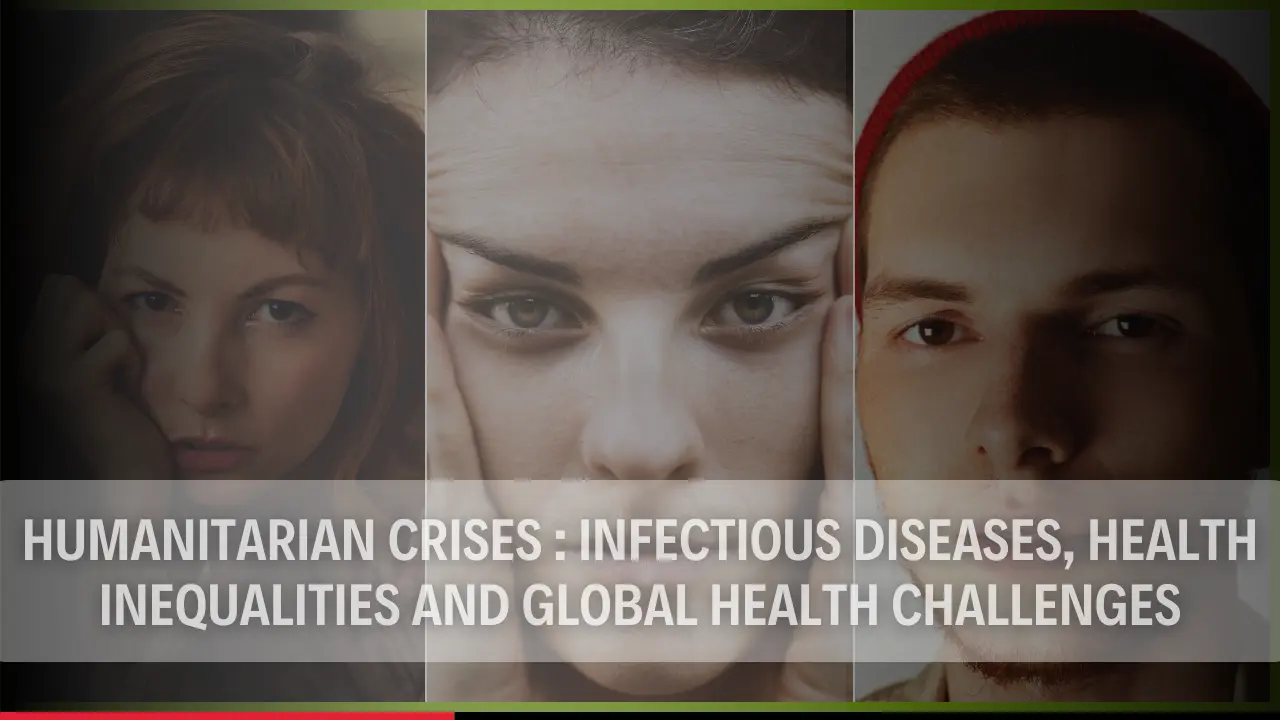Global health is significantly impacted by humanitarian situations. Humanitarian crises today touch more people than ever before. Examples include armed conflict and war, natural disasters, epidemics, and pandemics. These crises have a significant effect on healthcare systems.
The aftermath of the humanitarian crises frequently puts a strain on resources to the point where it diverts cash and personnel from essential healthcare services. Additionally, humanitarian crises are more likely to happen in low- and middle-income countries since their healthcare systems are typically underfunded and under-resourced compared to those of richer nations. Since these are the circumstances in which humanitarian crises typically occur, the effects on healthcare are frequently exacerbated.
Effects of Humanitarian Crises:
There are various factors that can cause humanitarian crises, let’s take a look on it:-
- Government chaos

Armed wars and civil war not only bring about famine and death, but they also result in refugee crises. Nearly 80 million people worldwide were displaced from their homes by the end of 2019 due to violence and persecution, according to ACNUR, the United Nations Refugee Agency. Political turmoil has led to humanitarian crises in Yemen, Somalia, South Sudan, and the north of Nigeria, for example.
- Cause by the environment
Even though they generate less controversy and public attention, humanitarian crises are being greatly impacted by climate change. 90% of disasters, according to the UN, are brought on by climate change. Disasters have increased in frequency over the past 20 years, and now there are twice as many of them. Devastating storms, heat waves, floods, and droughts are claiming lives and producing shortages that compel people to flee from their homes in search of safety (climate displacement).
- Medical emergencies
Significant humanitarian crises can be brought about by epidemics. Infectious disease is a major barrier to humanitarian help, with the World Health Organization (WHO) estimating that 1.6 billion people worldwide lack access to basic medical care. Nearly 30,000 people in West Africa were infected with Ebola between 2014 and 2016, which has a death rate of between 50% and 90% and claimed 11,000 lives. Nearly all of the 405,000 fatalities caused by malaria in 2018 occurred in Sub-Saharan Africa. HIV continues to be a serious global public health issue and has already claimed the lives of 33 million people. Up to 140,000 people die each year from cholera, which is brought on by squalor and filthy water.
- Population emigration
Population emigration is another effect on humanitarian crises. In order to flee war, famine, and natural disasters. 80% of the displaced people, according to ACNUR, reside in nations with acute food shortages and malnutrition. With 6.6 million migrants, Syria is at the top of the list.
- Wars on hunger and malnutrition devastate crops and infrastructure, making it impossible to get food where it is needed. In addition to drought and altered rainfall patterns, climate change is harming crops and destroying agriculture.
- Lacking essential services
International law safeguards employees at schools, hospitals, and other public institutions. They are still frequently the target, though. The UN is demanding the protection of these fundamental services in war zones to stop indiscriminate assaults on educational institutions like those taking place in Afghanistan as well as healthcare facilities dealing with the COVID-19 problem in Libya that are being bombed.
Solutions of Humanitarian Crises:

Humanitarian crises, according to the, is a collection of measures taken to assist, defend, and protect those impacted by a disaster that has an impact on their lives and means of subsistence. To protect human life, alleviate suffering, uphold decent living standards, and ensure access to necessities like food, medical care, water, and shelter are the goals of humanitarian activities. In addition to defending human rights, bearing testimony, criticizing, applying pressure to the government, and offering support, humanitarian help must also uphold fundamental rights.
According to the Development Initiatives’ 2020 Global Humanitarian Assistance report, the United States provided the most money for humanitarian crisis help in 2019 (5.85 billion euros), followed by Germany (2.758 billion) and the United Kingdom (2.59 billion) through private donations. With 1.922 billion, the European Union placed in fourth place. Yemen received the largest portion of this help (4.178 billion euros), followed by Syria (1.922) and Iraq (1.086).
The Office for the Coordination of Humanitarian Crisis Affairs (OCHA) and the Central Emergency Response Fund (CERF) are two of the UN’s various organizations that respond to world crises. A number of other significant organizations, including the United Nations Development Programme (UNDP), the United Nations High Commissioner for Refugees (UNHCR), the United Nations Children’s Fund (UNICEF), and the World Food Programme (WFP), also provide humanitarian crisis help.
Health Inequalities:
The term “health inequalities” describes the disparities in demographic groups’ levels of health. These disparities could be caused by socioeconomic class, gender, race or ethnicity, or geography. Both high-income and low- and middle-income countries struggle with health inequities.
Health disparities exist between those with higher and lower incomes and educational levels, for instance, in high-income countries. People with lower socioeconomic class are more likely to have negative health outcomes, such as greater incidence of chronic illnesses, issues with mental health, and early mortality.
Due to decreased productivity and higher healthcare expenditures, health inequalities can have considerable negative economic and societal effects. Therefore, addressing health disparities is crucial for ensuring equitable and sustainable global health.
Conclusion:
Among the most important issues facing global health today are infectious illnesses, health disparities, and humanitarian crises. A multi-sectoral strategy is required to address these issues.



